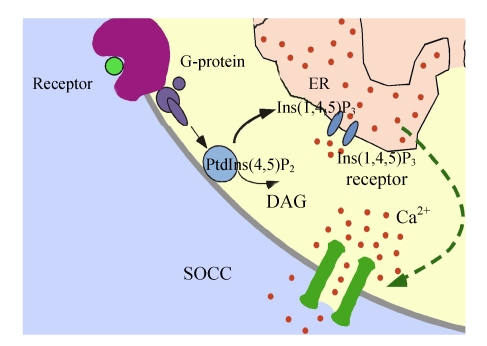Fig. 1.
Model for the activation mechanism of store-operated Ca2+ channels (SOCCs)
SOCCs are a family of Ca2+ permeable ion channels expressed by most cells. The signal for the activation of these ion channels is a decrease in the Ca2+ concentration in the endoplasmic reticulum (ER). Stimulation of diverse plasma membrane (PM) receptors converges on the activation of phosphatidylinositol (4,5)-bisphosphate [PtdIns(4,5)P2] hydrolysis, which results in the generation of diacylglycerol (DAG) and inositol (1,4,5)-trisphosphate [Ins(1,4,5)P3], and the subsequent activation of Ca2+ release from the ER via Ins(1,4,5)P3 receptor and Ca2+ influx across the PM. Depletion of ER Ca2+ activates PM-localized Ca2+ influx channels known as SOCCs

